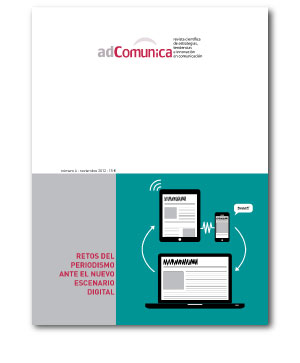¿Por qué leer la prensa regional hoy en día?
Contenido principal del artículo
Resumen
A pesar de un declive continuo en sus ventas, la prensa diaria y semanal regional permanece en Francia como el tipo de prensa de información más leída, muy por delante de los diarios nacionales y las revistas de información. Este artículo busca comprender por qué se lee hoy en día la prensa local. Extraído de mi tesis, los resultados surgieron de entrevistas con los lectores así como de un análisis de contenido de la prensa regional bretona. Las motivaciones para leer periódicos regionales permanecen estables en el tiempo. Para empezar, uno no elije su «periódico preferido»: frecuentemente, se hereda la lectura de los padres, o bien, se lee lo que está disponible en el lugar donde se come. Existen, a continuación, dos maneras de leer un regional. Una lectura geográfica que reenvía a las diferentes escalas del territorio y una lectura temática, que descansa sobre los centros de interés (información-servicios, resultados deportivos, obituarios…). Tanto en un caso como en el otro, la prensa regional aparece lejos de la misión de animadora del espacio público local que reivindica. No participa menos en el mantenimiento de un entramado social elemental que pasa por la transmisión de informaciones prácticas y noticias detalladas. La prensa regional no puede considerarse como la única representante del espacio público, pero constituye un elemento de la misma. Desde el punto de vista del lector, es un complemento de otros medios de comunicación, notablemente los digitales y las conversaciones cotidianas. Esta constatación es una invitación a redefinir el espacio público de una manera más abierta, fragmentada y dinámica. Esto puede alcanzarse abriendo la concepción del espacio público a nuevas dimensiones, tales como los intercambios orales diarios (Arendt), la articulación entre las escalas de territorio (Lacoste) y los procesos de socialización (Elias, Percherón), donde lo local es el lugar privilegiado.
Descargas
Detalles del artículo
1. Política propuesta para Revistas que ofrecen Acceso Abierto
Los autores que publican en esta revista están de acuerdo con los siguientes términos:
- Los autores conservan los derechos de autor y garantizan a la revista el derecho de ser la primera publicación del trabajo al igual que licenciado bajo la licencia CC BY-SA, que permite a otros compartir el trabajo con un reconocimiento de la autoría del trabajo y la publicación inicial en esta revista.
- Los autores pueden establecer por separado acuerdos adicionales para la distribución no exclusiva de la versión de la obra publicada en la revista (por ejemplo, situarlo en un repositorio institucional o publicarlo en un libro), con un reconocimiento de su publicación inicial en esta revista.


